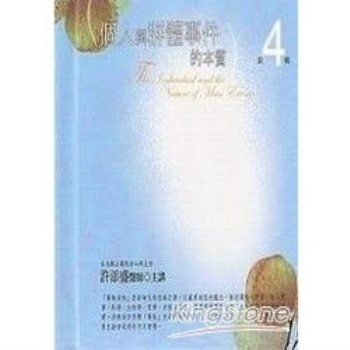| FindBook |
有 1 項符合
FINANCIAL AND ECONOMIC ANALYSIS FOR ENGINEERING AND TECHNOLOGY MANAGEMENT, SECOND EDITION的圖書 |
 |
FINANCIAL AND ECONOMIC ANALYSIS FOR ENGINEERING AND TECHNOLOGY MANAGEMENT, SECOND EDITION 作者:Riggs 出版社:新月 出版日期:2004-02-01 語言:英文 規格:普通級 |
| 圖書館借閱 |
| 國家圖書館 | 全國圖書書目資訊網 | 國立公共資訊圖書館 | 電子書服務平台 | MetaCat 跨館整合查詢 |
| 臺北市立圖書館 | 新北市立圖書館 | 基隆市公共圖書館 | 桃園市立圖書館 | 新竹縣公共圖書館 |
| 苗栗縣立圖書館 | 臺中市立圖書館 | 彰化縣公共圖書館 | 南投縣文化局 | 雲林縣公共圖書館 |
| 嘉義縣圖書館 | 臺南市立圖書館 | 高雄市立圖書館 | 屏東縣公共圖書館 | 宜蘭縣公共圖書館 |
| 花蓮縣文化局 | 臺東縣文化處 |
|
|
- 圖書簡介
Expert guidance for fiscally responsible engineering and technology managers. This thoroughly updated Second Edition is an accessible self-study guide and text that helps engineers extract important meaning from financial statements and accounting records, ask insightful questions, engage in thoughtful debate about accounting and financial issues, and make informed decisions that benefit their companies.
- 作者簡介
HENRY E. RIGGS is the founding president of Keck Graduate Institute of Applied Life Sciences, a member of The Claremont Colleges and the nation’s first graduate school dedicated solely to preparing students for professional careers in life science—based organizations. He is the author of several books, including Managing High-Technology Companies.
- 目次
1. INTRODUCTION: WHY KEEP SCORE?
Users of this Book.
Scorekeeping.
Definition of Accounting.
Limitations of Accounting Information.
Audiences for Accounting Information.
Different Messages for Different Audiences.
Accounting in the World of Business.
Accounting in Nonprofit and Governmental Organizations.
Useful Nonaccounting Information.
Importance of Personal Motivations.
Summary.
New Terms.
Exercises.
2. Accounting Framework: The Concept of Value.
Accounting Equation.
How Is Owners’ Equity Created?
Valuation Methods.
Valuing a Loan or Note.
Valuing Common Stock Securities.
Calculating Time-Adjusted Values.
Valuing Personal and Company Assets.
Choosing Among Valuation Methods.
Challenge of Alternative Valuation Methods.
Dominance of the Cost Value Method.
Summary.
New Terms.
Appendix 2A: Interest Tables for Calculating Time-Adjusted Values (Present Worth).
Exercises.
3. Financial Position: The Balance Sheet.
Key Accounting Reports.
Features of the Balance Sheet.
More Accounting Definitions and Conventions.
Summary.
New Terms.
Exercises.
4. Financial Performance: The Income Statement.
Definition of Revenue, Sales, and Expenses.
Statement Format.
Recording Sales Transactions.
Operating Expenses.
Accounting Period.
When Is Income Earned and When Are Expenses Incurred?
Accrual Concept.
Example: Accounting for a Full Period.
Summary.
New Terms.
Exercises.
5. Cash Flow Statement.
Why a Cash Flow Statement?
Sources and Uses of Cash.
Example: Metcalfe Company.
Interpretation.
Other Examples.
Summary.
New Terms.
Exercises.
6. Principles, Rules, and Mechanics of Financial Accounting.
A Brief Review.
Principles.
Specific Rules.
Role of the CPA Auditor.
How Good Are These Principles and Rules?
Income Taxes and Accounting Rules.
Accounting Mechanics.
Chart of Accounts.
Three Key Elements of Accounting Systems.
Accounting Cycle.
Summary.
New Terms.
Exercises.
7. Further Refinements in Valuation.
Prepaids and Accruals.
Reminder: Principle of Materiality.
Liabilities Created by Today’s Operations.
Accounting for Accounts Receivable.
Accounting for Inventory.
Accounting for Price-Level Changes.
Accounting for Currency Fluctuations.
Exceptions to the Accrual Concept and the Realization Principle.
Summary.
New Terms.
Exercises.
8. Accounting for Long-Term Assets.
Valuing Fixed Assets.
Income Tax Considerations.
Accounting for Other Long-Term Assets.
Summary.
New Terms.
Exercises.
9. What Can Financial Statements Tell Us?
Ratio Analysis.
Categories of Ratios.
Interpreting Ratios.
Linkage Among Operating Ratios.
Summary.
New Terms.
Exercises.
10. Accounting and Financial Markets.
Types of Securities.
Markets.
Investment Ratios.
Interpreting Investment Ratios.
Designing a Capital Structure.
Upside and Downside of Debt Leverage.
Introduction to the Cost of Capital.
Summary.
New Terms.
Exercises.
11. Digging Deeper.
Framework for Financial Statement Analysis.
‘‘Cooking the Books’’.
Summary.
New Terms.
Exercises.
12. Financial Markets and Capital Investment Decisions.
Concept of a ‘‘Hurdle Rate’’.
Weighted-Average Cost of Capital.
Calculating Returns.
Decision Criteria.
Some Everyday Applications of These Techniques.
Adjusting for Risk.
Adjusting for Inflation.
Summary.
New Terms.
Exercises.
13. Analyzing Manufacturing Costs: Introduction to Cost Accounting.
What Questions? Why? For Whom?
Reminder: Product and Period Expenses.
Understanding the Cost of Goods Sold.
Challenge: Accounting for Indirect Costs.
Historical Perspective.
Activity-Based Costing.
Costing Joint Products and By-products.
Cost Accounting in Other Functions and Industries.
Summary.
New Terms.
Appendix 13A: Variable and Full-Absorption Costing.
Appendix 13B: Standard Cost Accounting.
Exercises—Appendix 13A.
Exercises—Appendix 13B.
14. Analyzing Other Operating Costs and Decisions.
Examples of Operating Decisions.
Importance of Framing Alternatives.
Differential Cash Flows.
Recap of Fixed and Variable Costs.
Pervasiveness of Fixed Costs.
Challenges in Determining Differential Cash Flows.
Interrelationships Among Volume, Price, Cost, and Profit.
Operating Leverage.
Summary.
New Terms.
Exercises.
15. Budgeting and Forecasting.
Guidelines for Budgeting.
Responsibility Accounting.
Recap of the Reasons to Budget.
Analyzing Performance: Budget Versus Actual.
Interpreting Variance Balances.
Flexible Budgeting.
Human Behavior Considerations.
Other Types of Budgets.
Pro Forma Financial Statements.
Cash Budgeting.
Summary.
New Terms.
Exercises.
INDEX.
|











